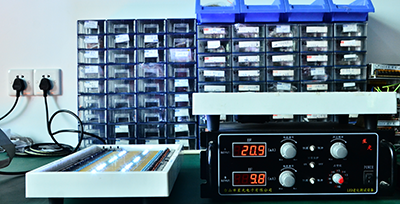In recent years, the lighting industry has shifted toward solutions that are not only efficient but also adaptable to diverse architectural and industrial needs. Among the leading options, LED lighting systems have carved out a significant role for themselves thanks to their energy savings, long life, and design versatility. But it’s not just about the lights anymore; how they’re sourced, integrated, and powered has become just as important.
As the market expands, businesses are looking beyond local options, turning toward global suppliers and export companies that can meet their unique project demands with consistency and quality.
Global Trends in LED Strip Lighting
The global growth of LED lighting, particularly strip lights, reflects a larger trend toward modular and flexible lighting systems. Whether it’s accent lighting for hotels, architectural illumination for commercial spaces, or ambient lighting in smart homes, LED strip lights provide the kind of customization traditional lighting can’t.
More than ever, designers and project managers are focusing on adaptability looking for options that blend functionality with aesthetics. LED strip lights make this easy, as they’re thin, flexible, and available in varying brightness and color options.
Understanding the Role of a Reliable LED Strip Lights Export Company
The success of lighting integration often depends not only on product quality but also on how reliably it’s delivered. This is where the role of an experienced LED Strip Lights export company becomes essential.
Export companies dealing in LED technology must navigate multiple responsibilities ranging from meeting global compliance standards to ensuring timely shipping, technical documentation, and after-sales support. It’s not just about shipping a product abroad; it’s about ensuring that the lighting system performs exactly as promised, wherever it ends up.
A dependable export partner helps buyers avoid project delays and ensures compatibility with local standards, which is particularly valuable in large-scale commercial or public lighting projects.
Why Power Supply Is the Backbone of Any LED System
Often overlooked, the power supply plays a foundational role in the overall reliability of an LED lighting system. It’s the hidden component that determines how long the LEDs last, how consistently they perform, and how efficiently they use energy.
Mismatched or low-quality power supplies can lead to flickering lights, voltage drops, and even damage to the LED units. That’s why selecting the right power source isn’t just a technical detail, it’s a strategic decision that can influence the total cost of ownership over time.
Navigating the LED Power Supply Market for Wholesale Needs
For those sourcing in bulk, finding the right LED Power Supply Wholesale partner is more than just comparing prices. It involves a deeper evaluation of product certification, thermal management, voltage options, and the ability to meet various load conditions.
Wholesale buyers often require customization such as dimmable units, waterproof enclosures, or specific wattage configurations which means working with suppliers who are flexible and technically sound. A good wholesale partner should be able to provide guidance on pairing power supplies with various LED systems, making them a vital link in the lighting ecosystem.
Integrating Components: LED Strip + Power Supply Considerations
When LED strips and their corresponding power supplies come from mismatched sources, even small inconsistencies can result in performance problems. This is especially true in complex installations, such as layered lighting in architectural settings or synchronized color-changing effects in event spaces.
That’s why it’s often more efficient to source both components from a supplier that understands how they interact. This ensures electrical compatibility, matching color temperatures, and consistent brightness across every application.
The synergy between LED strips and power supplies not only improves technical performance but also simplifies the installation and reduces future maintenance needs.
Key Considerations for International Buyers
For international buyers especially those managing commercial projects or supplying national-level clients reliability is key. While pricing and variety matter, other elements like compliance with CE, RoHS, or UL standards are equally crucial.
Minimum order quantities (MOQs), lead times, and shipment tracking systems also play a large role. Partnering with a supplier who communicates clearly, offers after-sales support, and understands cross-border logistics gives buyers a greater sense of control, even when sourcing from afar.
In this context, export companies that combine robust technical knowledge with global operations offer a valuable edge to buyers aiming for both scale and stability.
Conclusion
The future of lighting is not just energy-efficient, it’s intelligent, integrated, and responsive. As global adoption of LED technologies continues to grow, so does the importance of selecting the right partners to supply and support these systems.
From dependable export companies that understand the nuances of cross-border logistics to wholesale power supply providers who can meet complex project requirements, every piece matters.






